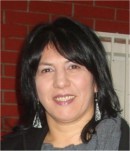

Plenary Lecture
Performance Improvement Using Diversity Techniques in Wireless Communication Systems over Correlated Fading Channels

Professor Dragana Krstic
Department of Telecommunications
Faculty of Electronic Engineering
University of Nis
SERBIA
E-mail: dragana.krstic@elfak.ni.ac.rs
Abstract: In wireless communications, fading is deviation of the attenuation affecting a signal over propagation media. The fading may vary with time, geographical position or frequency, and it is modeled as a random process. A fading channel is a communication channel containing fading. In wireless systems, fading may either be due to multipath propagation,called multipath fading, or due to shadowing from obstacles affecting the wave propagation. Various statistical models explain the nature of fading and several distributions describe the envelope of the received signal: Rayleigh, Rice, Nakagami-m, Hoyt, Weibull, a-m, k-m, … A log-normal or gamma distribution model the average power to account for shadowing.
Diversity technique is one of the most used methods for minimizing fading effects and increasing the communication reliability without enlarging either transmitting power or channel's bandwidth. In communication systems where antennas are sufficiently apart, it is considered there is no correlation between transmitted signals, as well as between interferences at the reception. However, it can not be always done in practice because there is insufficient antenna spacing when diversity is applied in small devices. Because of that, the performance of diversity systems in which there is a correlation between transmitted signals and between interferers have to be considered also.
Brief Biography of the Speaker: Dragana S. Krstic was born in Pirot, Serbia. She received the BSc, MSc and PhD degrees in electrical engineering from Department of Telecommunications, Faculty of Electronic Engineering, University of Nis, Serbia, in 1990, 1998 and 2006, respectively. Her field of interest includes telecommunications theory, wireless communication systems, satellite communication systems etc. She works at the Faculty of Electronic Engineering in Nis since 1990. She participated in more Projects which are supported by Serbian Ministry of Science. She has written or co-authored more then 170 papers, published in Journals and at the International/National Conferences. She has also reviewed many articles in IEEE Transactions on Communications; IEEE Communications Letters; ETRI journal; C&EE Journal; Elektronika ir Elektrotechnika and other prominent journals. She is the reviewer of the papers for many conferences and the member of technical program committees and international scientific committees of several scientific conferences. Also, she is the member of Editorial Board of International Journal on Advances in Telecommunications.